Group B. Serena, Miranda & Akilah
2am. All students were sleeping peacefully. In the darkness, Dr. Steve’s received a knock on his door.
“Sorry to bother you sir but there is a call from Mukhtar?”
“Uhh… yes?” he sighed.
“The bags have arrived!” Mukhtar said cheerily (we hope).
“Great.” Dr. Steve yawned.
After a hearty breakfast several hours later, the students (all save two) finally reconnected with their lost luggage, showered, and changed into fresh clothes for the first time in three days. Holden and Amanda had alas to wait for their bags to be delivered to Lake Naivasha.
Then, we headed out for the three-and-a-half-hour journey to our next stop, Lake Naivasha. The journey through the outskirts of Nairobi was remarkable and insightful for all. After a momentary commotion caused by several baboons just sitting calmly on the side of the road, we headed on our way.
The team watched speechlessly as we passed through some of the poorer yet vibrant areas areas that border the city. Small, crammed together abodes crowded the streets. Sheets of aluminum held up by wooden beams or metal poles and bars spread out across the even land as far as the eye could see. Pieces of paper blew past our truck, lining the earthen roads. People lounged on the grass beside the road, sleeping or else just sitting, and occasionally we smelled strong fumes as one or two people tended to small fires, burning trash or something rather odiferous.
“asefasdf
As we left the city behind, we encountered all kinds of livestock wandering freely in the valleys and grasslands beside the road. Goats, chickens, horses, cows, sheep, and even donkeys pulling wooden carriages were everywhere, flocks tended to by just one or two people – around Naivasha donkeys can be used to haul water.
The truck twisted and turned around the winding roads, slowly gaining height until before we knew it, we found ourselves overlooking the Grand Rift Valley; an endless expanse of low-lying farmlands and grasslands that extends from Mozambique to the Red Sea. We stopped to take a group picture and use the restrooms. Some of us had our first chance to barter in Kenya; “This is 500 shillings,” the shopkeeper said. “But for you, maybe we can make it cheaper.”
Excited, Lacey hurried back to the truck to get her money. Upon her return, the shopkeeper said, “Actually, now it’s 1000.”
“1000?” Lacey exclaimed. “You said 500 before.”
“750,” the shopkeeper bargained.
“I only have 500.”
Money exchanged hands and Lacey left with a wooden elephant and her purse 500 KYN dollars (about 5 dollars CAD) lighter.
During this time, other students fawned over tock hyraxes nibbling on things under the support wall. “They’re like the capybaras of Africa,” Miranda said about the small, round, groundhog-like creatures.
We all piled back into the truck, and as we climbed higher over the valley, we noted how small the barrier between the road and the cliff side was; only a small, less than-a metre distance separated us from the sheer drop.
On the other side of the mountain, flower greenhouses lined the flat land. Dr. Steve told the students how cut flower exports to Europe are one of Kenya’s biggest industries.
“Why are some of them empty and open like that?” One student inquired.
Dr. Steve continued to explain how when funding fell through for some companies, the greenhouses were abandoned and left to decay, and along with them, the livelihoods of local folks. Living in these company villages and in this region can be expensive here, and without the cut-flower industry to provide jobs, many people would pack up and move somewhere with more opportunity. They left behind ghost residences of abandoned buildings and fallen-down huts.
After some much needed power naps, we all awoke to jostling and tumbling as the truck headed off the road and into the campsite. “Keep yourself away from open windows!” Dr. Steve warned everyone. Branches crashed into the truck and leaves fell on our laps while we bent foward, heads in our hands.
As we pulled into the campsite, on Lake Naivasha, two large eyes and ears looked at us from the water’s edge. Hippos!
Everyone rushed as close to the electric charged fence to take pictures and peer through their binoculars. A whole family of hippos, including one little baby hippo, kept us entertained for the next hour. Then, we discovered an endless supply of birds of various species, including fish eagles, drongos, great egrets, cormorants, yellow-billed storks, lapwings, Fisher’s lovebirds, and more flew and flocked around the campsite. The students had a blast identifying each species using their field guides.
Then, after we struggled to unload and set up the heavy-duty tents, a lengthy and confusing endeavor, we ate a hearty late lunch-dinner and sat together in a circle of camp chairs, reminiscing about the day and speculating what the ones ahead of us will hold.
Thanks for reading the blog today! Please remember to like and subscribe, and if you’re really interested, take the course next year! Until next time, Miranda and Serena.
- Sleepy truck ride
- Green houses along shroes of Lake Naivasha
- Dani Rift Valley
- Rift valley
- Carnalley’s Camp greet staff
- Rock hyrax
- Outlook Rift Valley
- Serena Amadahy proudly in front of their tent
- Nocturnal visitor. Photo yiling
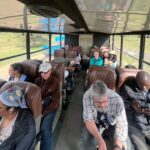
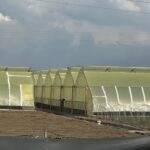
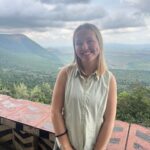
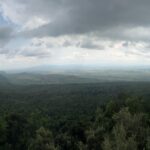
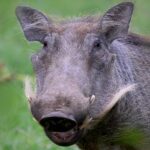
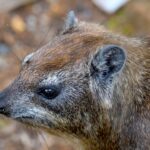
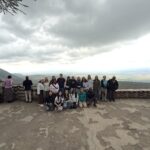
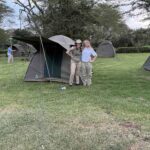
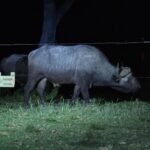
Leave a Reply